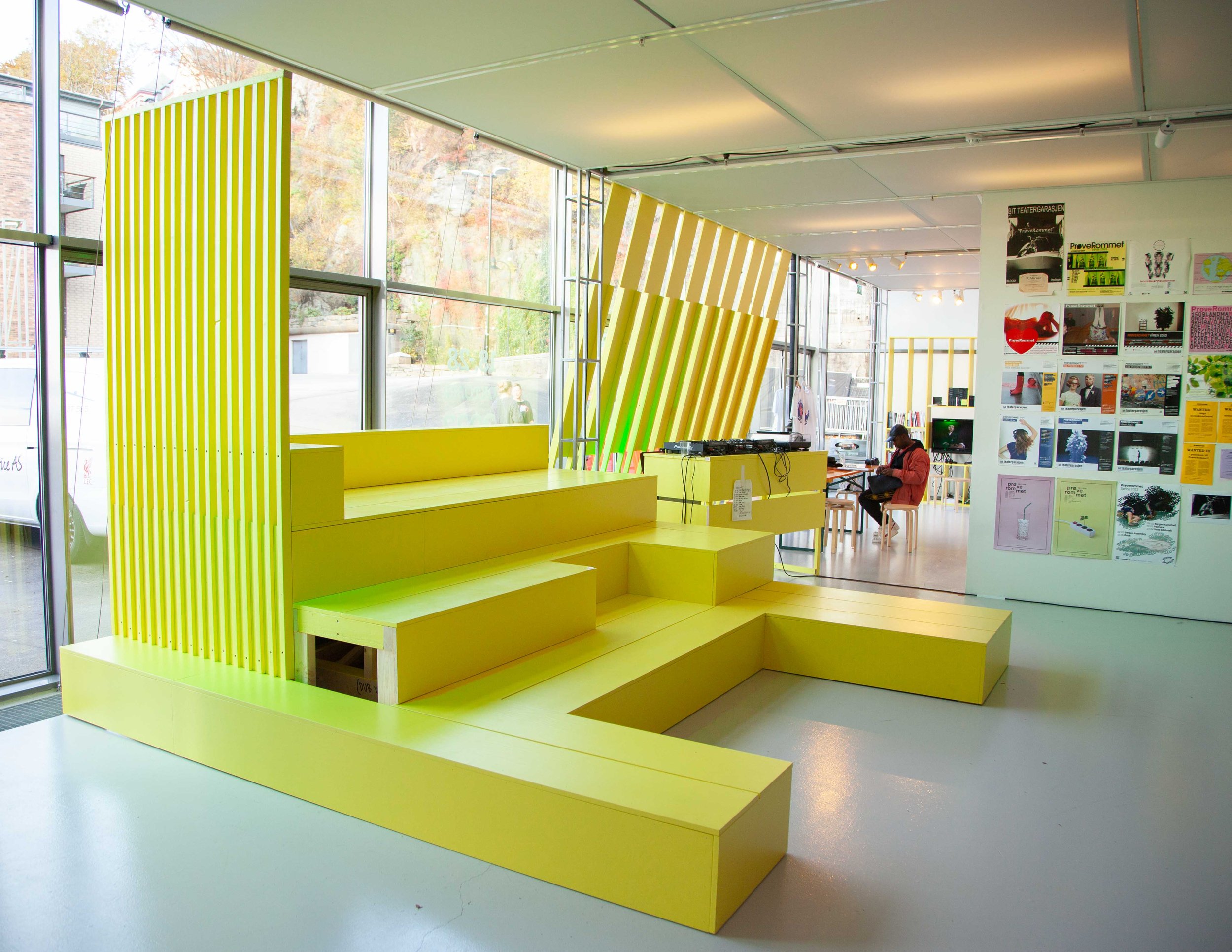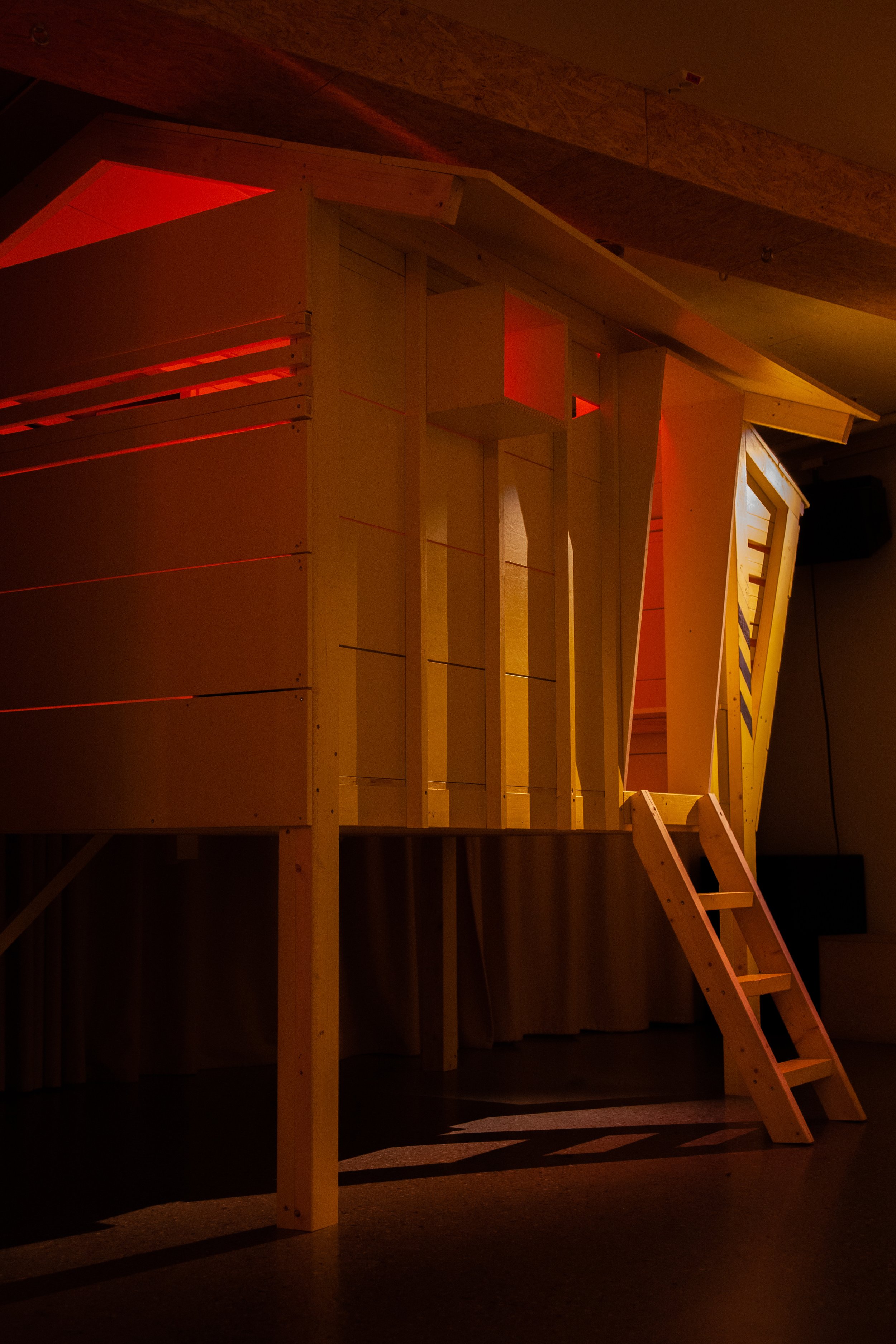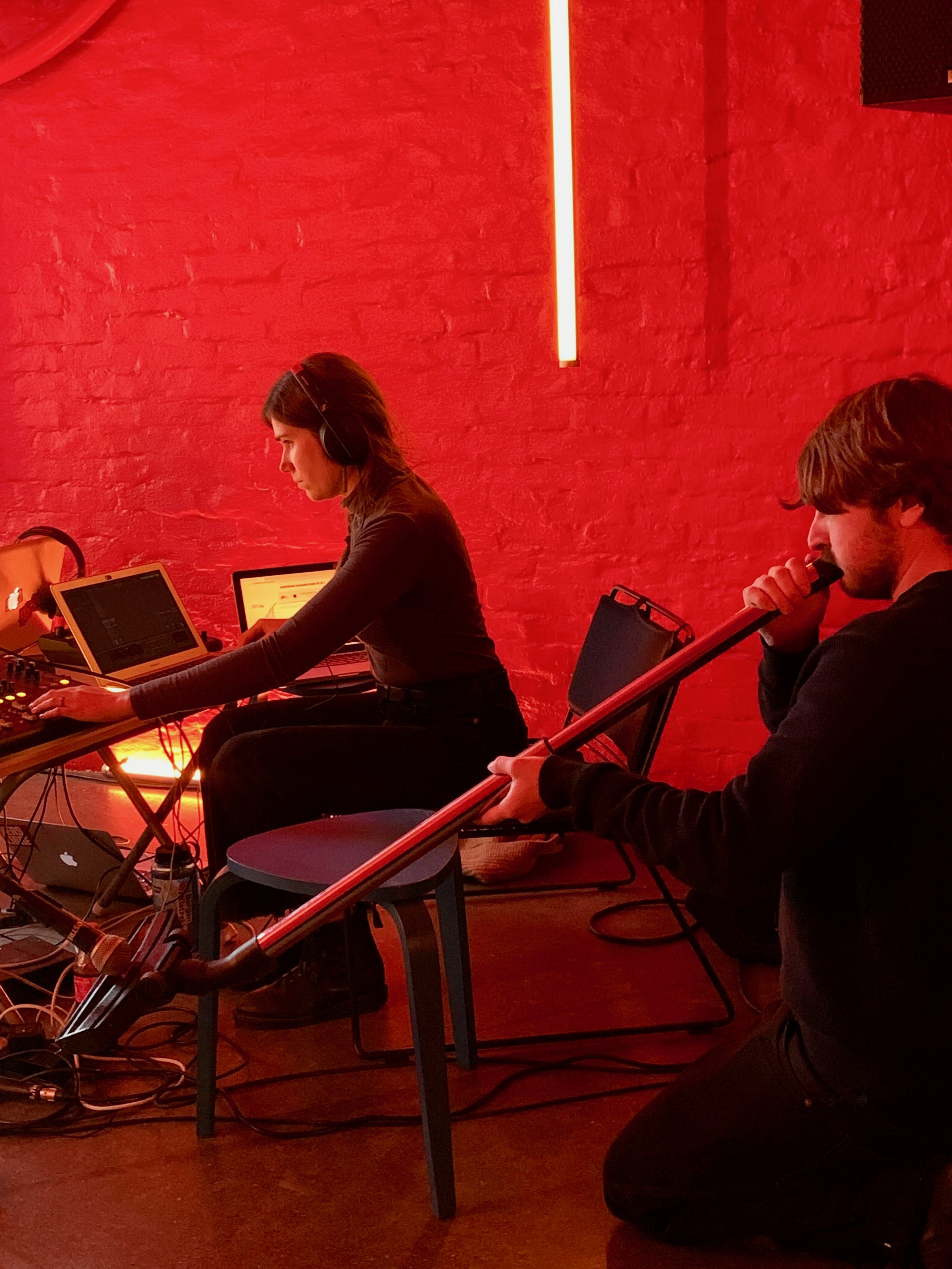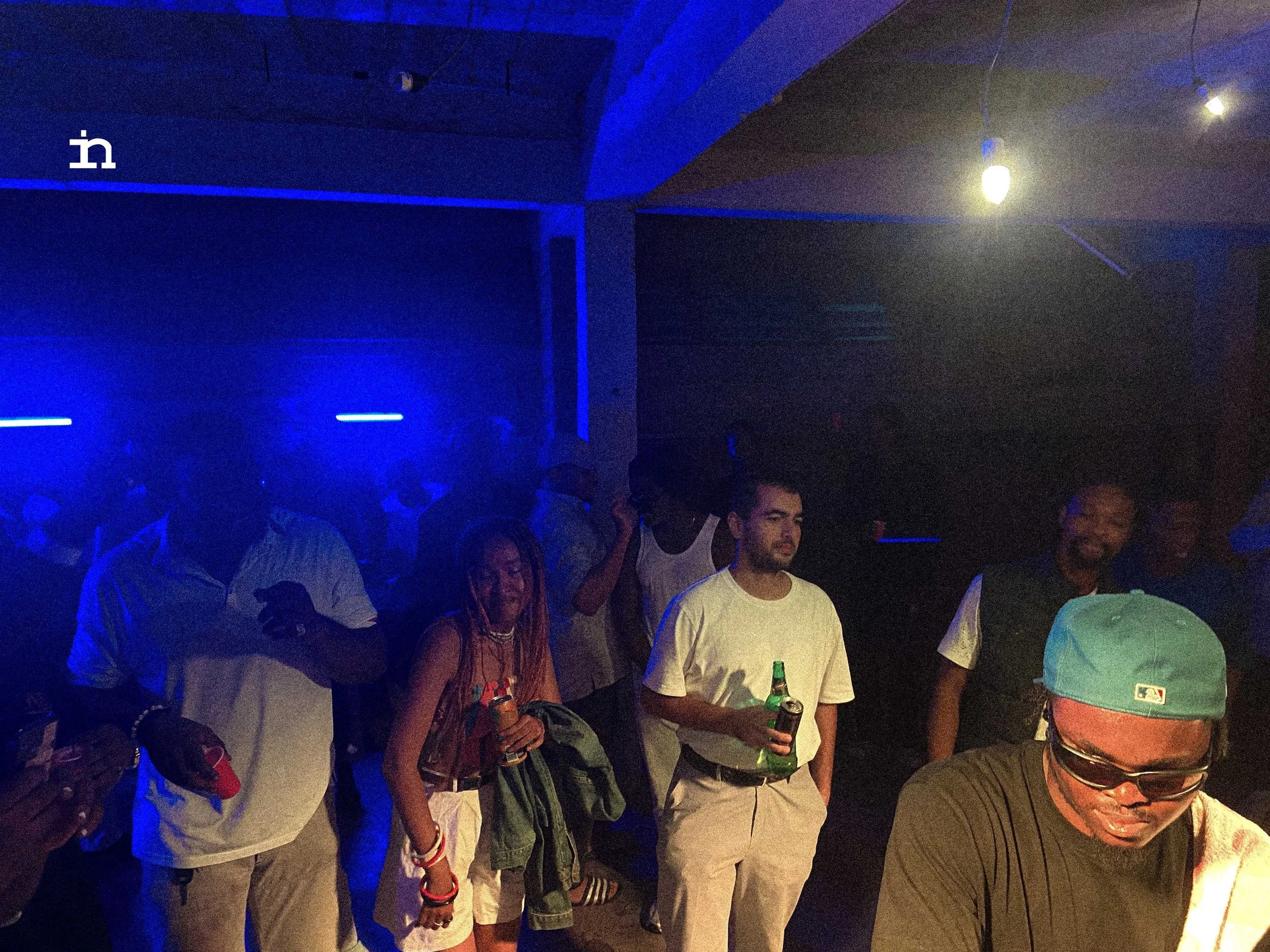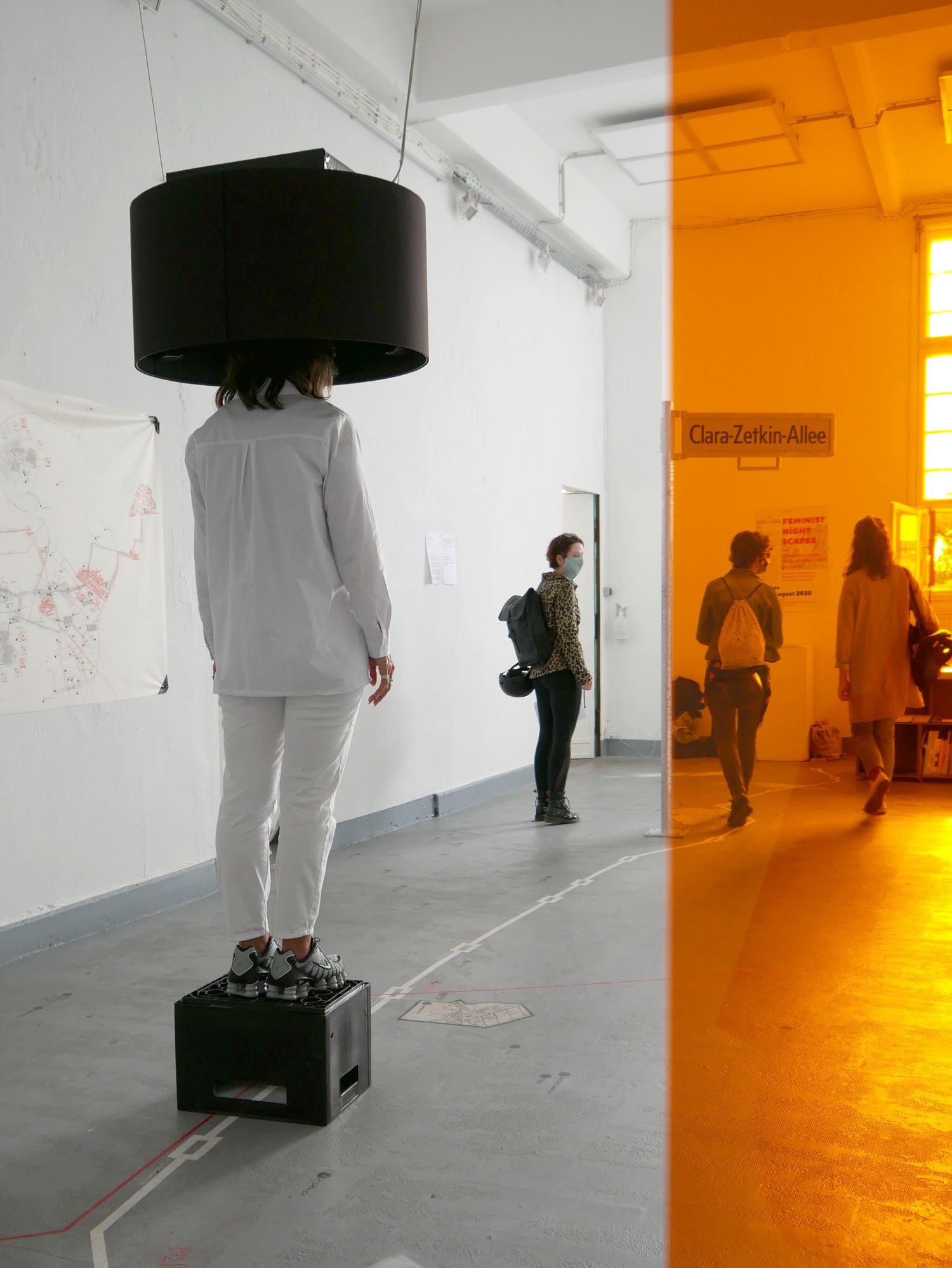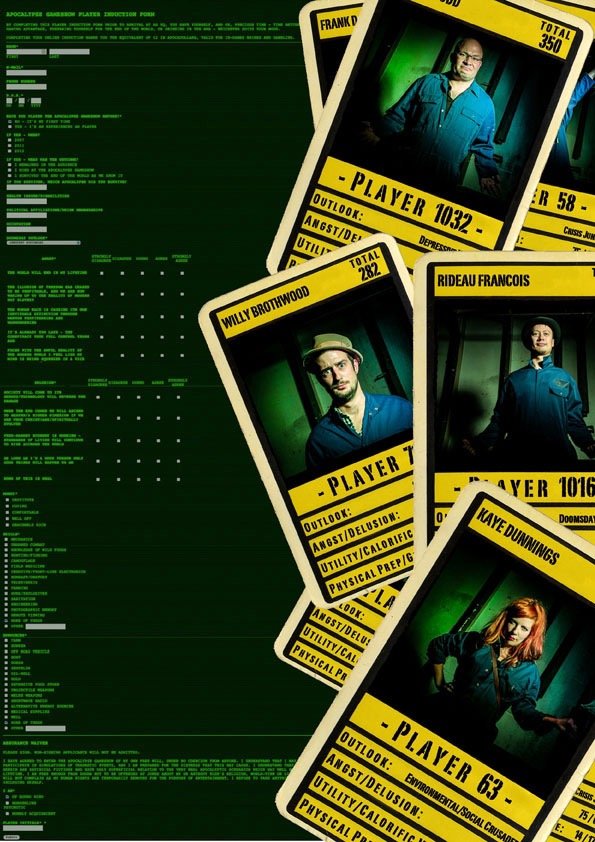Fergus Tibbs is an artist, DJ, and cultural producer originally from Glasgow, Scotland, now based in Bergen, Norway. He holds an MFA from the Art Academy Bergen and a BA (Hons) from DJCAD, Dundee.
Fergus’ projects are usually cross-disciplinary and collaborative, incorporating ideas and practices from people of different backgrounds. Central to his work is oral communication and human interaction, often creating situations that encourage conversations and public dialogue. His previous projects include club nights, radio stations, a swimming club, parties, exhibitions, pubs, and workshops.
For the past ten years, he has been DJing and organising parties and club nights in Bergen and across Scotland. He is the co-organiser and resident DJ of the club night ‘Keep it Dark’ at Østre, Bergen. He uses this regular party as a test site for different clubbing ideas, often playing with the physical space as well as light, sound, temperature, and volume.
Hosting has become a key part of Fergus’ work, providing a way to initiate interactions and gatherings. His ongoing project, ‘Hosting Infrastructure,’ plays with the physical architecture involved in gathering human bodies. He creates structures and environments that serve as a substrate for public events, where people can sit, gather, eat, perform, dance, or talk. His approach is fun, silly, and welcoming whilst always trying to be accessible, drawing in people with a broad range of perspectives.
Image 1: Hosting Infrastructure (Acid Re-Work), 2023, Østre, Bergen
Image 2: Hosting Infrastructure (Acid Re-Work), 2023, Østre, Bergen.
Image 3: Hosting Infrastructure (Dub Version), 2023, Visningsrommet USF (Meteor Festival), Bergen
Image 4: Air Conditions radio broadcast W/ Freya coursey, Liis Ring and Pernille Meidell, Live on Vers Libre and Seyðisfjörður community radio, 2022, Ekko Festival
Image credit Ekko festival
